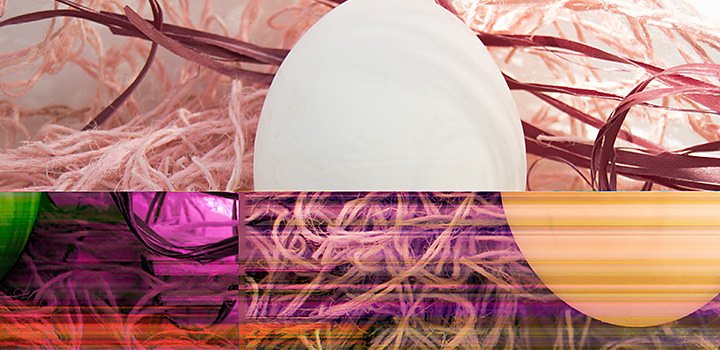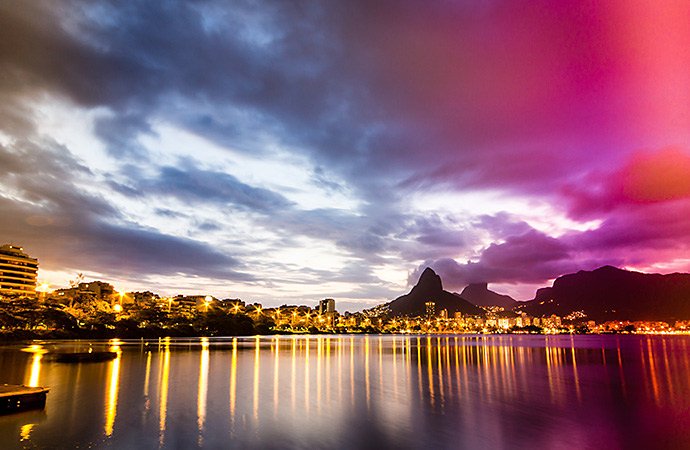Types of popular video effects.
Explore the ins and outs of post-production video effects and see how they can elevate your next video project.

Creating the look you want.
Shooting stunning video is more accessible than ever with the improvement of smartphone cameras and video editing tools. It’s now possible to capture great video content anytime, anywhere. But it’s not always easy to capture the exact look you want while shooting your footage. That’s where post-production visual effects come in.
Before implementing these VFX, learn more about the ins and outs of some popular effects and the moods and emotions they can invoke.

Experiment with light leaks and lens flares.
Traditionally a light leak occurs when the lens and camera seals aren’t aligned properly. Because of this, light enters the lens and gets distorted. When recording on film, you can’t control these unintentional leaks, but with post-production editing with digital video you can add or edit light leaks as necessary. Light leaks often appear as streaks of light across the frame, or as light bleeding into an image from the edges. This cool effect can create nostalgia, harkening back to old home movies and handheld video cameras.
A lens flare effect mimics the refraction caused by bright light shining into a camera lens. This often appears as a starburst effect or a streak of light across the frame. It can also be added into a video in post. “A lot of music videos and sporting events like boxing and fighting use light streaks and lens flares,” videographer Hiroshi Hara notes. “They add emphasis, drama, and can also look really cool.”

Lens flares can also be used to create an emotional climax in your narrative. “If your character is standing in the light with their eyes closed, they’ve come to a realization or have had a moment of enlightenment,” explains videographer Martin Vavra. Light leaks are a way to communicate moments of clarity and can be an effective tool for furthering your narrative.
Perfecting VHS glitch effects.
Before the crisp footage of 4K video, analog VHS video was all that was available. VHS tapes degrade over time, resulting in skipping, glitchy lines across the frame, blurred colors, and grainy quality. This looks very different from the high-quality footage we’re accustomed to now. But that quality of video, while less detailed or pristine, now has artistic value — these glitch effects inspire nostalgia and set a certain retro tone. By editing Channel Blur and Noise Values, and by applying a Wave Warp, you can mimic the look and feel of VHS footage in editing software like Adobe Premiere Pro.

“Part of the reason these effects still exist is that they were baked in during a time period when VHS was new and revolutionary. All the effects Adobe makes available are making it easier to communicate through these cultural references,” explains videographer Mitch Apley. For example, records aren’t the most popular music format anymore, but people still universally understand that a record scratch means stop the presses. The cultural connotations of these effects can help you set the scene, invoke sentimentality, or even imply uncertainty.
Talking about his recent work, Vavra says, “I wanted it to have a seventies and eighties horror movie feel. So I desaturated my footage and made it look less vibrant, more gritty.” Adjustments to the noise and grain quality can unsettle the audience by tapping into the cultural touchpoints of analog film.
Adjusting color in your videos.
Sometimes the color in your video footage isn’t what you want. Whether the white balance was wrong or the footage underexposed, it can be difficult to communicate your message or narrative if the colors are off. Light can have a huge impact on the mood and emotion on your video. Whether you’re going for a bright, lighthearted aesthetic or a dark, moody look, light and color can get you there. Explore how to adjust the color and light after the fact with Adobe After Effects and Premiere Pro:
- See how you can edit the color and luminance in video clips and correct video that’s too dark or too light. With Vectorscope or waveform scopes, you can analyze the chroma and luminance to make more effective adjustments.
- Use layers to nondestructively apply video effects like opacity and color correction. Keep editing and experimenting with color without negatively impacting the quality of your video assets.
- Learn how to fix shaky footage, poor exposure, and white balance issues. Even if video feels unsalvageable, follow these steps before deleting it.
- If you’re looking to add more color adjustments, consider color grading. This post-production effect can be subtle or intense depending on your goals. For example, this tutorial for a 4-color gradient overlay gives step-by-step tips for extreme color grading.


Adding otherworldly effects.
Sometimes the look you’re going for can’t be achieved with a few color adjustments. Video effects have come a long way, as evidenced by big budget superhero movies. While achieving those results takes time and expertise, you can start capturing similar effects on your own. Explore these tutorials for overlaying film, creating eerie supernatural effects, and changing the weather — the possibilities are endless.
- Learn how to create snow in your videos and see how changing the amount of snow and rate of snowfall in the foreground and background can add depth to your video.
- Add a supernatural element to your video by creating this ghostly effect with stock footage and video filters.
- Try your hand at special effects with this walkthrough video. Starting with simple, unedited footage, see how you can add a UFO into the shot.
Exploring intro titles and motion graphics.
Elevate your footage with a professional intro sequence or motion graphics. Start by learning the fundamentals of creating and animating text layers. From there, try perfecting your own Hollywood-style motion graphics intro sequences. With so many tutorials and templates available, there are plenty of ways to give your video a distinct look. Whether you’re crafting stunning music videos, compelling short films, or funny YouTube content, give it a professional edge with motion graphics or text intros.
Remember, “when it comes to adding special video effects and filters, there should always be a purpose,” notes Hara. Be intentional about your use of effects, to ensure they elevate and improve your video. There are always new effects and filters on the rise, so keep exploring to find the right aesthetic for your film.

Contributors
Do more with Adobe After Effects.
Create incredible motion graphics, text animation, and visual effects.
You might also be interested in…
Introduction to video editing.
Learn the principles of video editing and practical tips for both big and small screens.
Understanding camera shots in film
Explore the most common camera shots, and learn when and how to use them to greatest effect.
See how this technique can help bring a stylized and evocative effect to your work.
Learn about the dynamic range of your camera and how to manipulate it to create the images you want.
Get Adobe After Effects
Create cinematic visual effects and motion graphics.
7 days free, then NIS 81.00/mo.



